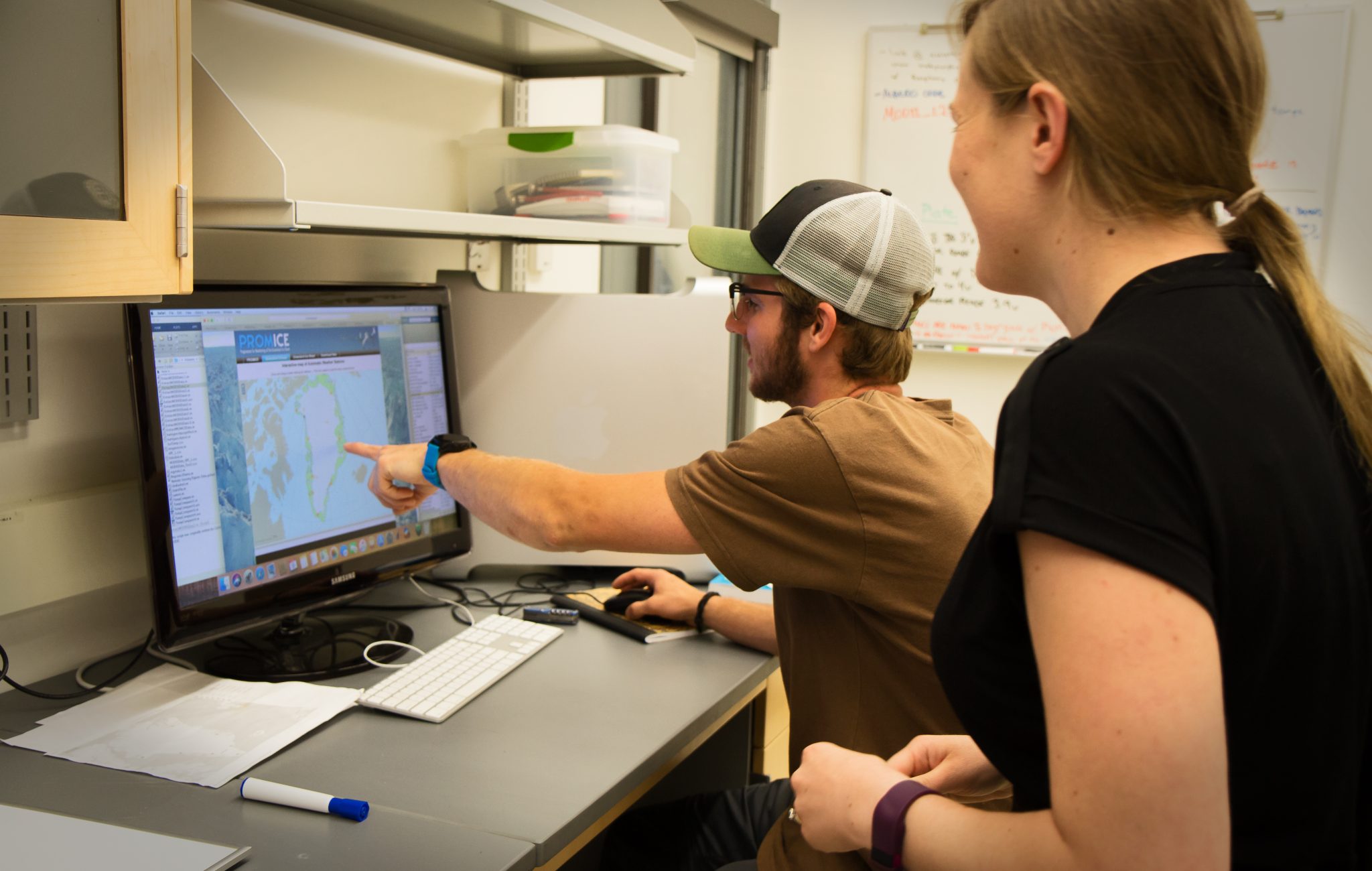Using physics to study the impact snow has on climate change

Wesley Brown ’19 and Karina Zikan ’20 are spending their summer at St. Olaf College immersed in the physics of snow.
“As the planet warms, we see a loss in snow and ice cover, which reduces the albedo — the proportion of energy reflected off a surface — of the planet as a whole, resulting in the planet absorbing more energy, leading to further warming, further ice loss, more energy absorbed — it’s a positive feedback loop that is negatively impacting the environment,” Brown says.
Under the guidance of Assistant Professor of Physics Alden Adolph, Brown and Zikan are investigating snow properties and their relationship to the energy budget of snow-covered regions on both local and global scales. Through multiple projects on these topics, their findings may be able to provide more accurate predictions on climate change.
This summer research is part of the college’s Collaborative Undergraduate Research and Inquiry (CURI) program, which provides opportunities for St. Olaf students from all academic disciplines to gain an in-depth understanding of a particular subject by working closely with a St. Olaf faculty member in a research framework.

“When exposed to different temperature conditions, the structure of the snow evolves and changes,” Zikan says. “We’re working to create a system that will allow us to control both the top and bottom temperatures of a snow sample, and then we will look at how the albedo and grain structure of that snow sample changes.” This portion of the project will allow for improved modeling of snowpack changes within climate models on the local scale.
Utilizing temperature data from automatic weather stations in Greenland, installed and maintained by the Danish Programme for Monitoring of the Greenland Ice Sheet, Brown and Zikan work to validate remotely sensed temperature data gathered by a pair of satellites operated by NASA. This could inform potential changes to the algorithms and mechanisms in satellite-based measurements that would lead to more accurate predictions on just how quickly this global positive feedback is snowballing.

“I think this is the kind of research I would like to continue in grad school and further studies, but before I committed to that I wanted the experience doing it first,” Zikan says. “Professor Adolph’s project appealed to me in particular because I like the idea of using my physics and math skills and applying it to a real world system. I have quite enjoyed it thus far, so plans are still on track.”
Their hope is to present this research at the American Geophysical Union fall meeting in Washington, D.C., and then publish their work.

“Having these students work with me this summer has been invaluable. We’re really building our lab from the ground up: designing the systems we’re going to be using, figuring out what parts we need, and how to program our instrumentation,” Adolph says. “Having undergraduate students who are passionate, willing to work hard, and really interested in the subject matter and building up their skill set has been really helpful to me during my first year at St. Olaf. I’m grateful to have committed students working with me.”